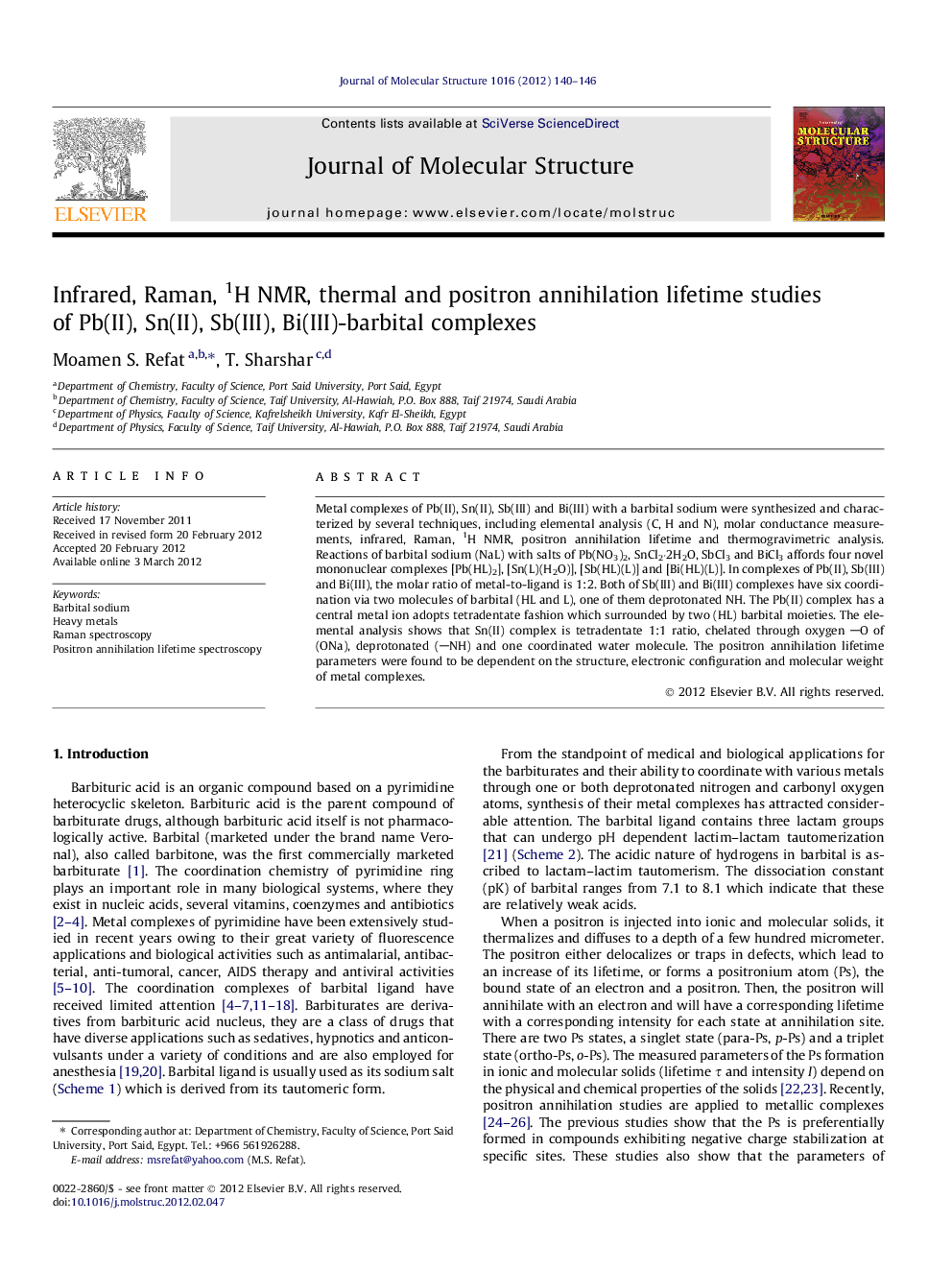| Article ID | Journal | Published Year | Pages | File Type |
|---|---|---|---|---|
| 1403553 | Journal of Molecular Structure | 2012 | 7 Pages |
Metal complexes of Pb(II), Sn(II), Sb(III) and Bi(III) with a barbital sodium were synthesized and characterized by several techniques, including elemental analysis (C, H and N), molar conductance measurements, infrared, Raman, 1H NMR, positron annihilation lifetime and thermogravimetric analysis. Reactions of barbital sodium (NaL) with salts of Pb(NO3)2, SnCl2⋅2H2O, SbCl3 and BiCl3 affords four novel mononuclear complexes [Pb(HL)2], [Sn(L)(H2O)], [Sb(HL)(L)] and [Bi(HL)(L)]. In complexes of Pb(II), Sb(III) and Bi(III), the molar ratio of metal-to-ligand is 1:2. Both of Sb(III) and Bi(III) complexes have six coordination via two molecules of barbital (HL and L), one of them deprotonated NH. The Pb(II) complex has a central metal ion adopts tetradentate fashion which surrounded by two (HL) barbital moieties. The elemental analysis shows that Sn(II) complex is tetradentate 1:1 ratio, chelated through oxygen O of (ONa), deprotonated (NH) and one coordinated water molecule. The positron annihilation lifetime parameters were found to be dependent on the structure, electronic configuration and molecular weight of metal complexes.
► This paper success to synthesize some heavy metal barbital complexes. ► A reaction of barbital sodium affords four novel mononuclear complexes. ► Positron annihilation lifetime parameters were discussed dependent on the structures.
